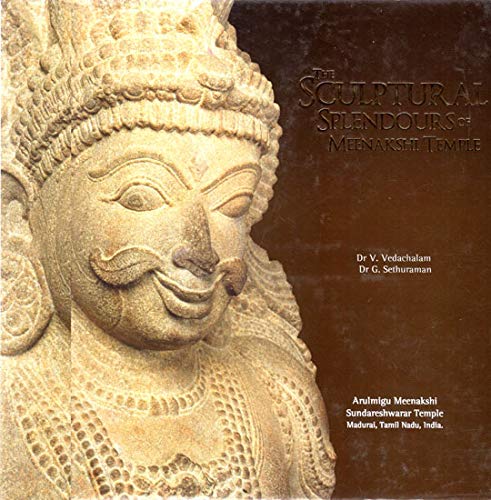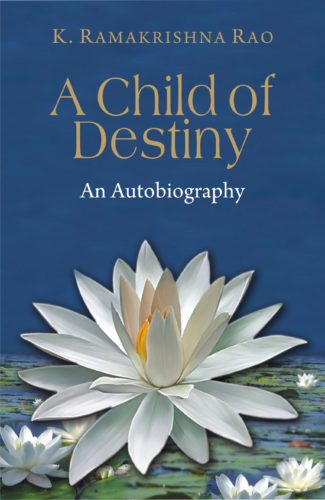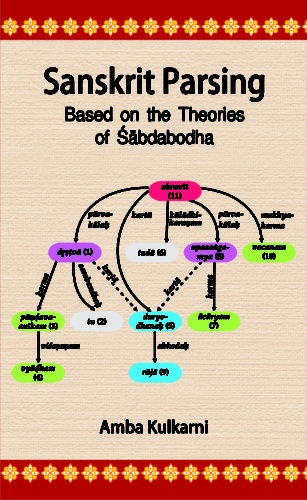
The Sculptural Splen...
The Sculptural Splendours of Meenakshi Temple
by: Dr. V. Vedachalam , Dr. G. Sethuraman₹1,100.00 Original price was: ₹1,100.00.₹990.00Current price is: ₹990.00.
ISBN: 9788193883907
Year Of Publication: 2019
Edition: 1st
Pages : 195
Bibliographic Details : Bibliography
Language : English
Binding : Hardcover
Publisher: Arulmighu Meenakshi Sundareshwarar Temple
Size: 24
Weight: 875
“The Sculptural Splendours of Meenakshi Temple” Cancel reply
- Sale!A Child of Destiny by: K. Ramakrishna Rao
₹950.00Original price was: ₹950.00.₹855.00Current price is: ₹855.00.““This book is an autobiographical essay of a man who rose from a humble beginning in a remote village with one room elementary school to attend the University of Chicago, with its impressive Gothic structures ranked among the best in the world; and to become the Chancellor of a prestigious university in the country. Dr Rao attributes all this to destiny. Destiny in this view constitutes the circumstances in which one is situated; but it is the deftness with which one manoeuvres himself through the maze of circumstances that really matters in the final analysis.
The book is offered as a possible source to inspire the aspiring individual not only to set noble goals but also find possible ways of reaching them. Blessed is the one who moves his way upward without hurting himself or others in the process. This has been the guiding principle of Dr Rao.”
“ - Sale!Ardhanarisvara in Art and Literature by: Neeta Yadav
₹1,800.00Original price was: ₹1,800.00.₹1,620.00Current price is: ₹1,620.00.The scholarly work throws light on the artistic, aesthetic, literary and philosophical aspects of the Ardhanarishvara form of Shiva the form which is a divine expression of the amalgamation of the male and the female and is said to contain the whole world in it. Providing a conceptual and historical back-ground of the doctrines relating to Shiva and Shakti worship it involves an iconographical study of the Ardhanarishvara image, with the focus on its dress, ornaments, coiffure, posture and other features. With many visuals of the Ardhanarishvara images even the unpublished ones, it describes the images found in different parts of India and discusses the emergence of the deity relying on literary sources and theories. Explaining how the idea and actual representation of the unity of Shiva and Shakti came to acquire supreme importance with the growth of sects each worshipping the deity in its own form, Dr. Yadav points out that the Ardhanarishvara aspect is basically the output of the Tantra philosophy. Providing maps and line-drawings and a list of the places that have yielded Ardhanarishvara images, she makes an interesting and indepth analysis, based on extensive field-work, to come up with some brilliant and new explanations of the meaning and implications of the Ardhanarishvara.
- Sale!An Introduction to the Study of Indian Poetics by: Mahesh Singh Kushwaha, Sanjay Kumar Misra,
₹600.00Original price was: ₹600.00.₹540.00Current price is: ₹540.00.The book aspires to do for Indian poetics what Hudson’s book, An Introduction to the Study of English Literature did for English literature, though in a totally different manner and style. It provides the student with the essential knowledge about almost all aspects of Indian poetics. Based on the original Sanskrit sources, it presents the necessary information lucidly in precise and clear terms. Each chapter is self-contained and complete in itself, with explanatory notes, and a bibliography of relevant works. The Sanskrit terms used in the text are invariably explained or provided with English equivalents.
For quick reference, “A Glossary of Sanskrit Literary Terms” is given in the Appendices, which contain also “A List of Noted Indian Poeticians (including commentators) and Their Works” and “Notes on Major Texts in Indian Poetics”.
This handy volume, with its unique features, will prove invaluable to those who are going to embark on the study of Indian poetics, especially the ones who have no Sanskrit background. To a devoted student, it will prove a useful companion during his/her further studies. - Sale!Art, Aesthetics and Philosophy by: S.G. Kulkarni, Kavita Chauhan,
₹420.00Original price was: ₹420.00.₹378.00Current price is: ₹378.00.The savants of the twentieth century have excavated the past to discerningly reveal the present. Swami Vivekananda, Rabindranath Tagore, Sri Aurobindo, Mahatma Gandhi and Ananda Coomaraswamy, among others, interpreted Indian aesthetics, civilization, culture and philosophy unearthing the Indian wisdom against the wrong interpretations and teachings of the Western colonial scholars. This volume, a collection of papers presented at a national seminar on the Philosophy of Ananda Coomaraswamy held in February 2011 at the University of Hyderabad, approaches Coomaraswamys philosophy on Indian aesthetics, life and religion from different perspectives.
The volume brings forth different facets of Coomaraswamy: as a catalyst in spiritualizing Indian arts; his views on modernism and anti-modernism; his efforts in aestheticizing India; his polemics of decolonization through art criticism; his aesthetical philosophy; his perception and understanding on art, culture and Indianness; his metaphysics; and his philosophical approach to visuals and materials from the lens of an art historian. It sketches Coomaraswamys multifaceted persona, enunciating that the crux of modern Indian philosophy is one of vision, rather than building theories.
In a nutshell this book presents the varied reflections on Coomaraswamys personality as a philosopher, art historian, art curator and his strong positioning against the colonial teachings of Western art historians and philosophers on Indias art, civilization and culture, projecting an image of Indianness in every sphere. - Sale!Rated 5.00 out of 5Sanskrit Parsing by: Amba Kulkarni
₹900.00Original price was: ₹900.00.₹810.00Current price is: ₹810.00.India has a rich grammatical tradition, still extant in the form of Panini’s grammar as well as the theories of verbal cognition. These two together provide a formal theory of language communication. The formal nature of the theory makes it directly relevant to the new technology called Natural Language Processing.
This book, first presents the key concepts from the Indian Grammatical Tradition (IGT) that are necessary for understanding the information flow in a language string and its dynamics. A fresh look at these concepts from the perspective of Natural Language Processing is provided. This is then followed by a concrete application of building a parser for Sanskrit using the framework of Indian Grammatical Tradition.
This book not only documents the salient pieces of work carried out over the last quarter century under Computational Paninian Grammar, but provides the first comprehensive exposition of the ideas involved. It fills a gap for students of Computational Linguistics/Natural Language Processing who are working on Indian languages using Paninian Grammatical Framework for developing their computational models and do not have direct access to the texts in Sanskrit.
Similarly for the Sanskrit scholars and the students it provides an example of concrete application of the Indian theories to solve a contemporary problem.









There are no reviews yet.